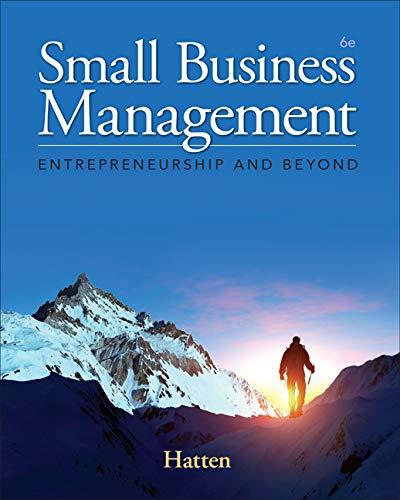Question
Answer those without any plagiarism or Ai please. I need organic answer within 4-8 senetences Chapter9 1.Have the norms for most of the teams you
Answer those without any plagiarism or Ai please. I need organic answer within 4-8 senetences
Chapter9
1.Have the norms for most of the teams you have belonged to been formal or informal? How do you think that has affected these teams?
2.Have you ever been involved in creating a team contract? Explain how you think that may have influenced how the team functioned
3. Should the person requesting a meeting always prepare a meeting agenda? Why or why not?
4. Do you think conducting team meetings standing up is a good idea? Why or why not?
Chapter 10
1.What are the types of conflicts that individuals may have at work? Which type have you experienced the most?
2. What are some primary causes of conflict at work?
3. Explain how miscommunication might be related to a conflict at work.
Chapter 11
1.What do you see as the main difference between a successful and an unsuccessful decision? How much does luck versus skill have to do with it? How much time needs to pass to know if a decision is successful or not?
2.Research has shown that over half of the decisions made within organisations fail. Does this surprise you? Why or why not?
3.Have you used the rational decision-making model to make a decision? What was the context? How well did the model work?
4. Share an example of a decision in which you used satisficing. Were you happy with the outcome? Why or why not? When would you be most likely to engage in satisficing?
5. Do you think intuition is respected as a decision-making style? Do you think it should be?
Why or why not?
Chapter 12
1.Think of a leader you admire. What traits does this person have? Are they consistent with the * traits discussed in this chapter? If not, why is this person effective despite the presence of different traits?
2. Can the findings of trait approaches be used to train potential leaders? Which traits seem easier to teach? Which are more stable?
3. How can organisations identify future leaders with a given set of traits? Which methods would be useful for this purpose?
4. What other traits can you think of that would be relevant to leadership?
Chapter13
1. Which of the six sources of power do you usually draw upon? Which do you use the least of at this time?
2. Distinguish between coercive and reward power.
3. Which tactics seem to be the most effective? Explain your answer.
4. Why do you think rational persuasion is the most frequently utilized influence tactic?
5.Give an example of someone you've tried to influence lately. Was it an upward, downward, or lateral influence attempt?
Chapter 14
1.Can new employees change a company's culture? If so, how?
2. Are there conditions under which change is not possible? If so, what would such conditions ne?
3. Have you ever observed a change process at an organisation you were involved with? If so, what worked well and what didn't?
4.What recommendations would you have for someone considering a major change of culture within their own organisation?
Step by Step Solution
There are 3 Steps involved in it
Step: 1

Get Instant Access to Expert-Tailored Solutions
See step-by-step solutions with expert insights and AI powered tools for academic success
Step: 2

Step: 3

Ace Your Homework with AI
Get the answers you need in no time with our AI-driven, step-by-step assistance
Get Started


